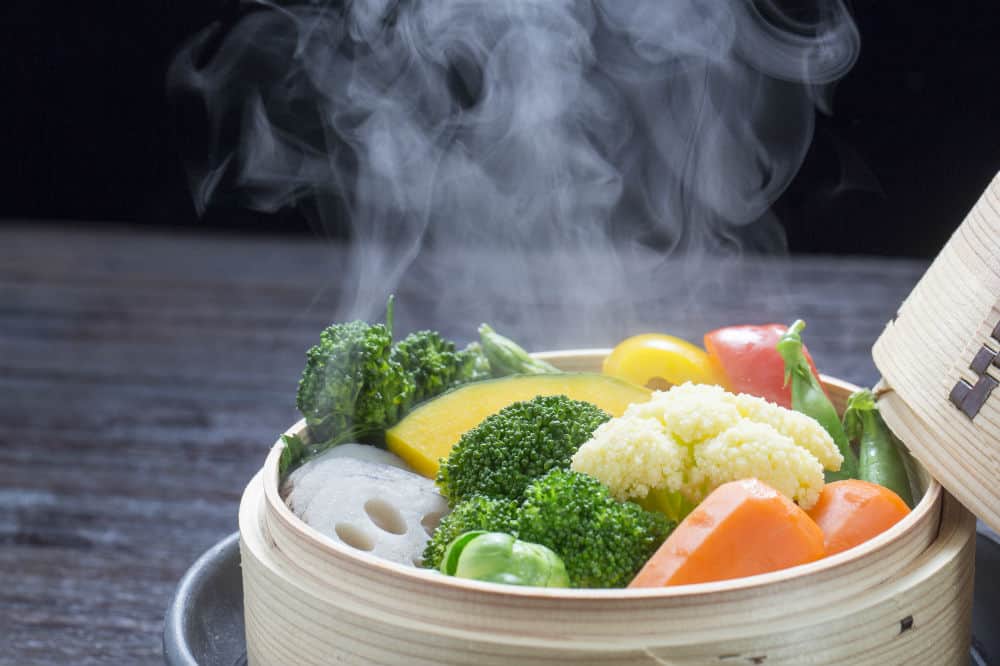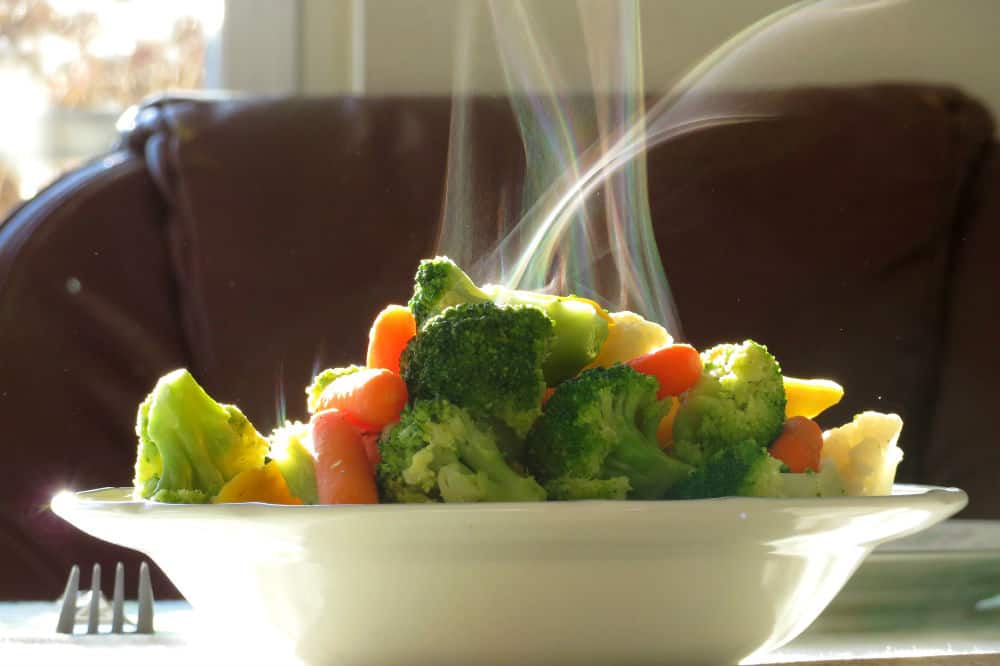Leading a healthy lifestyle can really be challenging sometimes, especially when there are so many temptations to do otherwise.
Modern conveniences and luxuries, such as ordering pizza and fast food, can sometimes seem to be working against you.
If you are truly dedicated, vegetables are the way to go, and deciding between steaming vs. boiling vegetables is also something to consider.
Vegetables are easy and quick to cook, and they can be eaten any time of the day.
The way you cook your vegetables, though, can affect the number of nutrients left in them to be absorbed by your body.
You want to make sure you are getting the most from them.
We will look at steaming and boiling vegetables to see which is better for you.
We will also give you three more handy tips on how to get the most out of your veggies.
Boiling Vegetables

Submerging your vegetables in water and boiling them on your stovetop is probably one of the most common ways of cooking them.
It’s simple and easy; you just need a pan and water.
So why does boiling vegetables get such a bad reputation?
The problem is that some of the vitamins contained in vegetables, such as vitamin C and folates, are water-soluble.
This means that they will dissolve when you cook them in water, and many will be lost to the surrounding water.
If you’re cooking soup, you don’t have to worry about this, as your cooking water will become the stock of the soup.
If you are serving them with meat and potatoes, you should consider a way to get that water back into the meal.
You can make gravy or sauce using vegetable water. The water from boiling potatoes is also good for thickening sauces and stews.
Pros
- You just need a pot and some water
- Water can be used to create other recipes
Cons
- Water soluble nutrients are depleted from the vegetables
- Vegetables can lose their color vibrancy
- It can go soggy if overcooked
Steaming Vegetables
Steaming vegetables is becoming increasingly popular as minimal water is used to create steam, which then cooks your vegetables through.
Your cooked vegetables will lose fewer nutrients and be crisper and more colorful on your plate.
Many people think you need a steamer to steam your vegetables. You can steam them in the microwave or on a stovetop.
To steam in the microwave, you just need to place your vegetables with some water into a microwave-proof bowl and then cover them tightly.
Let the microwave on high power for just a few minutes.
To steam them on the stove, you can create your steamer by using a normal pot with a lid, some balls of tin foil in the bottom, and a heat-proof plate to create a steaming rack.
Pros
- More nutrients are preserved
- Vegetables are crisper and more vibrant
Con
- You need more equipment
Three Top Tips

Apart from knowing the difference between steaming vs. boiling vegetables, there are ways to help you get the most out of your vegetables. Here are some handy tips for you:
1. Frozen Vegetables Can Be Better for You
Vegetables that are flash frozen are effectively frozen in time at a point in their life when they are more nutrient dense.
On the other hand, buying “fresh” vegetables can actually contain fewer nutrients, as it takes much longer for them to reach the market and eventually your home.
You should steam your frozen vegetables to preserve the most nutrients.
2. Store Your Tomatoes at Room Temperature
Ok, so we know this is officially a fruit, but still, a top tip we wanted to share is to store your tomatoes at room temperature.
Storing your tomatoes in the fridge can reduce the number of antioxidants in them.
They also lose some of their flavors. Naturally, they won’t keep for as long, but you’ll just have to eat them sooner rather than later!
3. Keep Broccoli Wrapped
Unlike tomatoes, broccoli should be stored in the fridge, and it should be wrapped.
Antioxidants in broccoli are preserved better when in packaging and stored at an ideal temperature of 34 degrees Fahrenheit.
Steaming Success
If you had to choose between steaming vs. boiling vegetables, it depends on what your resulting dish will be.
If you’re making soup, stew, a casserole, or a dish with gravy, it really doesn’t matter how you cook the vegetables.
That is because you can reuse the water from the cooking process, adding nutrients to the meal.
However, if you have veggies as a side dish, you should go the extra mile and steam them to ensure that you and your family get the most from the meal.
